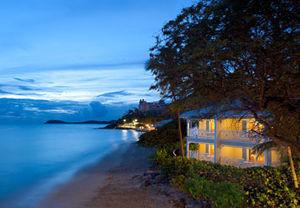 The Caribbean as a sailing
destination dates back to the fifteenth century, when Columbus arrived.
However, the indigenous Caribbean population at that time of the Caribs
and the Arawaks/Tainos can place claims that they were the first sailors. Well,
to then known world the Spaniards were the most adventurous and can claim that
they were the people who started the development of the new world. After
Christopher Columbus made his journey to the shores of the Caribbean it set the
stage for development, wars, tribes becoming extinct and later the infamous
slave trade.
The Caribbean as a sailing
destination dates back to the fifteenth century, when Columbus arrived.
However, the indigenous Caribbean population at that time of the Caribs
and the Arawaks/Tainos can place claims that they were the first sailors. Well,
to then known world the Spaniards were the most adventurous and can claim that
they were the people who started the development of the new world. After
Christopher Columbus made his journey to the shores of the Caribbean it set the
stage for development, wars, tribes becoming extinct and later the infamous
slave trade. The Forts on all the colonial Caribbean islands tell the tales of how precious these islands were to these European countries. In many of these islands today the Forts stand as historic treasures showing the colorful past of how hard the colonial masters fought to maintain control of the beautiful islands. Most of the Forts are overlooking the different towns in the various countries once stood as guard to these town coastlines. Throughout all the islands you will find the names of different places can be traced to both the Caribbean colonial era and indigenous Caribbean people as well. You will find many islands which were former English colonies in their times of independence having places with French and Spanish. Further, you will find the even some indigenous names that have remained.
The island of St. Lucia still uses their patio which is a local version of the French language. Dominica is one of the islands that must be mentioned when speaking of the history of indigenous people. It is one of the only islands that have an indigenous population alive today. In addition, the Caribs as they are called still maintain their cultural identity. There is a small population of Caribs living in the northern section of the island of St. Vincent. An interesting feature of the island of St. Vincent is seen as the original homes of the people of Honduras. History recalled that most of the Caribs lively in St. Vincent migrated to Honduras during the colonial era. Sadly, though some of the Arawaks/Tainos who lived in the Greater Antilles have all been extinct.
Another mark showing the colonial Caribbean history is the underwater attractions and marine life. Many of the islands have colorful reef attractions that are wreckages of ship plundered by pirates during the colonial era. Countries like the Cayman Islands, Bahamas, and Bermuda underwater tell tales of the hard fought battles between the colonial masters and pirates. Although many European countries saw the Caribbean as means of enriching themselves and spreading their influences, their cultures and presences still remain in many of the islands.
For a Spanish Caribbean experience the island of Cuba, Dominican Republic and Puerto Rico are great choices. For a French Caribbean vacation experiences the islands of St. Martin, Guadeloupe, Martinique and St. Barthelemy are great choices. Moreover, for a Dutch experience you can try the islands of St. Martin, Aruba, Bonaire and Curacao. For an English experience you can try any of the English speaking islands. Finally, for an African Caribbean vacation experience you can try any one of the different colonial influences. Moreover, you will be fascinated by different blends of patios integrated into the different European languages.
The exploits of sailing expeditions in the fifteen century turned the history of the Caribbean region into a new dimension. It is sad that some of the indigenous people are not around in most of the countries. However, when going on any sailing adventure on the different islands remember the colorful past of how these islands change ownership from the indigenous Caribbean ancestors to the different colonial Caribbean masters.
